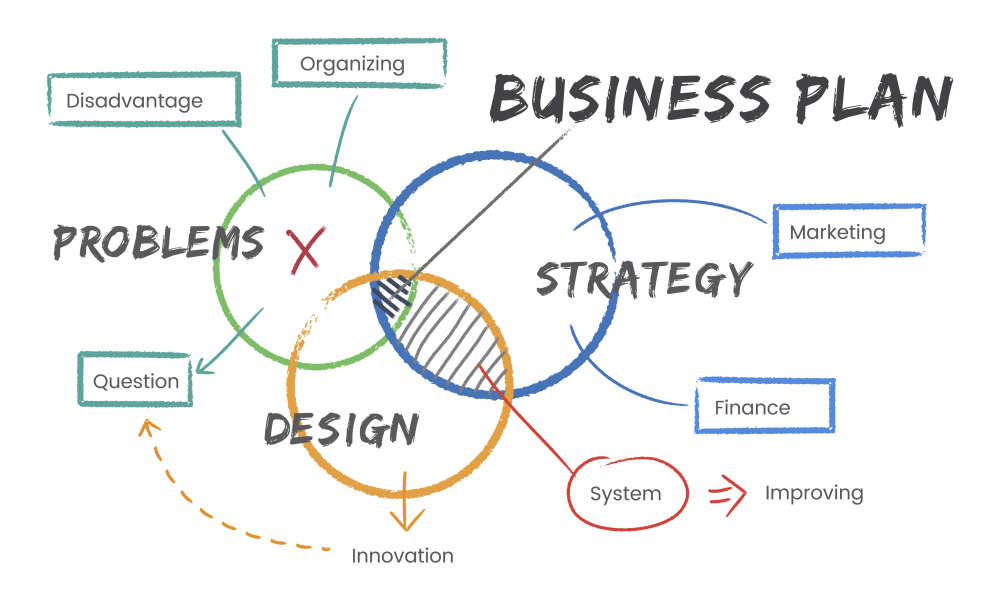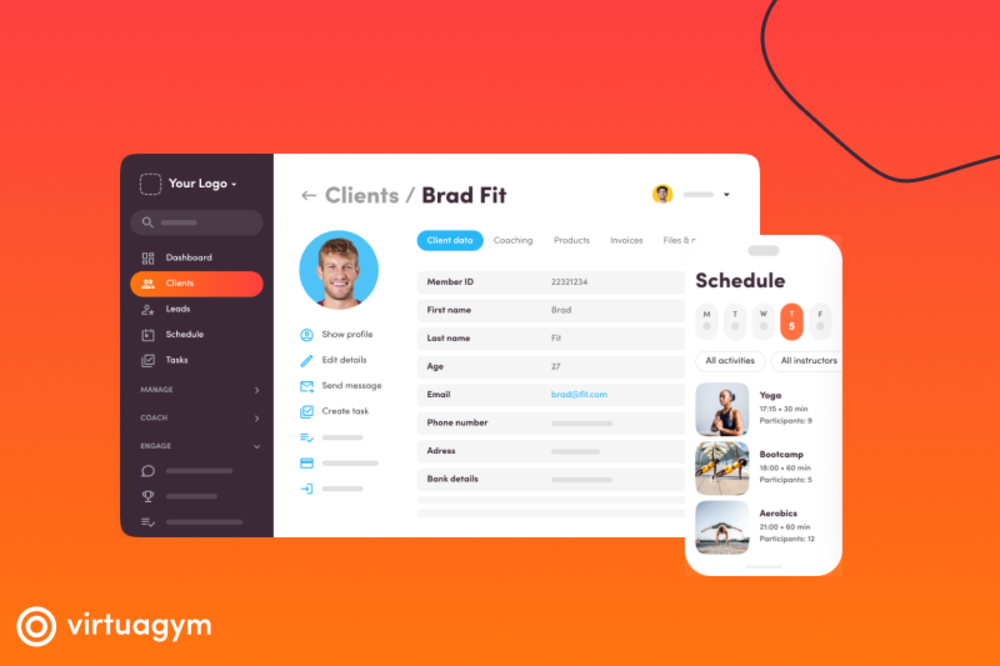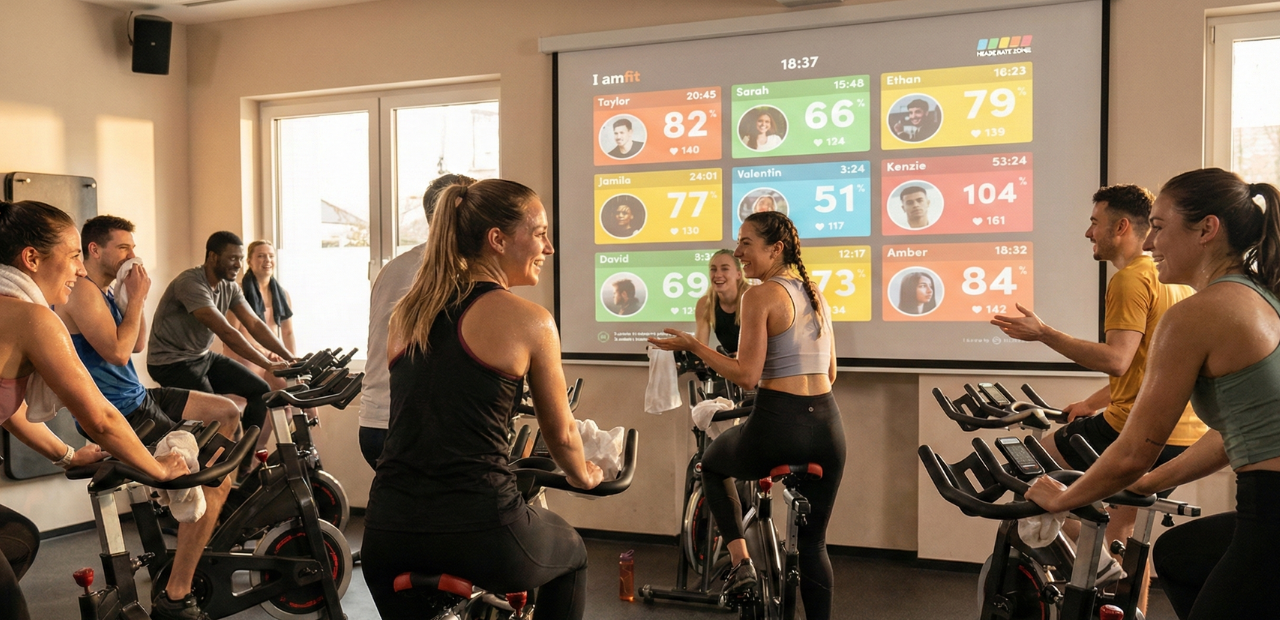So you’ve made up your mind: you want to open a gym. But do you know what it takes to accomplish your dream?
Being a successful gym owner requires more than just some equipment and a nice location. You will be taking a big risk by opening a business, meaning that you’ll have to deal with making decisions about your marketing strategy, finances, hiring process, among other important aspects.
But how do you make your dream happen? To help you get on the right track, we have compiled a guide on how to open a gym – including all the basics you’ll need to think about before you spend a single penny.
Opening a Gym: A Checklist

If you’re here, you might be thinking, “I want to open a gym, but where do I start?” Fret not – we’ve rounded up all the things from A to Z to get you started in your gym business.
Starting a gym from scratch can be challenging. What do gym owners struggle with? Let’s hope this checklist can ease some of your concerns.
Setting Up a Gym – The First Few Steps
The hardest part is at the start of opening a gym. From finding a location, to setting up insurances, sourcing fitness equipment, and marketing efforts; you may find yourself standing at the very bottom of a very steep climb towards potential success.
However, it is at this very stage where the determination, perseverance, and a clear vision are crucial. Taking the first step will set the foundation for your new business.
‘Ok, I want to open a gym: where do I start?’
There are a couple of bases you need to cover in the run-up to the first day of business of opening a gym. Premises, insurance, and gym management software are just some of the things you need to think carefully about when in the pre-launch stages for your gym business.
With that in mind, let’s start at the beginning.
1. Crafting Your Gym Concept and Deciding Its Name

Begin by contemplating the kind of gym you aspire to establish. You could be considering partnering with a franchise, launching an upscale boutique fitness center, or transforming a warehouse into a trendy industrial-style gym.
The first step is to gather your thoughts, grab a pen and paper, and start brainstorming.
Dive into business blogs or books about the fitness industry to gain insight, subscribe to informative podcasts, and seek wisdom from current gym owners.
You can find inspirational success stories from established fitness entrepreneurs here.
Curate a list of business owners who you could potentially reach out to for advice. Don’t hesitate to schedule visits and prepare in-depth questions to ask.
Most entrepreneurs, whether experienced or beginners, are often willing to share their experiences and help.
Success as an entrepreneur is most likely when you find a service or product that aligns with your talents, brings you joy, and for which there’s demand in the market.
2.Your Gym Business Plan

It goes without saying that the first one has to have a vision for their business plan in mind before embarking on setting up their gym business.
This is the part where you can brainstorm your mission statement, and lay down the blueprint for your gym’s success. The key is to do it all in regard to costs to open your own gym.
At this stage of the process, Google is your friend.
There’s a wealth of business plan templates on the web that you can use as inspiration for your own business. Consider your fitness business plan as a written guide for all your next steps.
Here is a blog that can help you with your business plan.
Do some market research on what type of gyms will be successful and be prepared to adapt and improvise when you put that business plan into action.
3.Define your mission and vision: what makes your gym unique?
Gym businesses need to have a clear and compelling mission and vision in order to be successful. If you know what you stand for and where you want to go with your gym, you are better able to make informed choices which will enhance your fitness brand.
That is, a compelling mission communicates the purpose and unique value of your new business. Moreover, that combined with a vision could attract like-minded people which could create a loyal community which fosters a sense of personal responsibility among the customers.
Here is a guide on how you can achieve this:
Mission
Your company’s mission statement is a concise description of why you exist. To define this, ask yourself the following questions:
Why did you choose to start a fitness business?
What fitness or health issues do you solve and who do you do this for?
What makes your gym unique compared to the other gyms in your area? (You could do a competitive analysis for this)
Then take the answers to these questions and summarize them in a short and sweet statement. This will be your gym’s mission.
Vision
Your gym’s vision is your vision of the future of fitness. How do you hope your gym will develop?
Think about the goals you want to achieve, the impact you want to have on the health and well-being of your members, and the changes you want to see in the fitness industry.
Branding Your Gym
Having defined your mission and vision, the next step is to think of a name to your unique fitness center.
This name should mirror your mission and vision, distinguish you from your rivals, and resonate with your target group.
The gym’s name should serve as a guiding light that shapes every facet of your business, from branding initiatives to the community you nurture within your gym.
Spend time brainstorming ideas and soliciting feedback to zero in on the perfect name for your fitness hub.
For more assistance on this step, here’s a useful blog titled “A Complete Guide on How to Choose a Gym Name”.
This resource will provide more insights and strategies to help you name your gym business effectively.
4.Find Your Ideal Gym Location
You’ve heard it before, ‘location, location, location’ is everything. Where to open a gym is a big question. If you set up in a place that sees a lot of foot traffic, you’ll be sure to see more members – usually.
However, there’s more to consider than just the number of people that will pass by. It is important for you, as a business owner, to understand the target demographic and their preferences.
For instance, if you are focusing on families, then you may consider a gym space in a community-oriented neighborhood. On the other hand, if your new gym caters to young professionals, a business district or a trendy neighborhood may well attract new members.
Don’t forget to analyze the competition in your desired area, as this could allow you to find gaps in the market that you could fit, and therefore differentiate yourself from other gym businesses.
5.Being Qualified and Having All the Licenses and Insurances You Need

On the legal side of the spectrum, you’ll need to have a business license that’s authorized within your geographical jurisdiction.
If you’re planning to open a small gym or studio in the US, make sure to check out the Small Business Administration website for links to State websites for state licensing requirements.
Moreover, you’ll need a security blanket: insurance.
Gyms, as spaces, are susceptible to injuries, accidents, or damage - both to the gym members and to the expensive equipment that most gym owners invest in.
Therefore, it’s important to secure a comprehensive insurance plan that covers all areas, including general liability, theft, worker’s compensation in case of bankruptcy, and property damage and casualty.
Operating your own gym necessitates certain obligatory licenses and permits for legal and effective functioning.
While specific requirements may differ based on your location and the services you offer, here are some common Gym Business Licenses you might need:
Gym Business Licenses
Business License
A fundamental requirement for most businesses. Obtaining a business license authorizes the operation of your gym within a specific jurisdiction.
Building and Use Permit
If you’re converting an existing building into a gym or constructing a new one, you’ll likely need a building permit. Also, ensure the chosen location is appropriately zoned for gym use.
Health and Safety Licensing:
Given the fitness industry’s nature, you might be required to meet certain health and safety standards, which could include procuring specific health and safety permits.
Music Licenses
If you plan on playing music at your gym - which is highly likely - you’ll need a music license. More information about music (rights) in gyms can be found in this blog.
Navigating through these may seem daunting, and it might be beneficial to enlist a legal expert’s help to guide you.
Having business insurance to cover several potentialities is crucial, especially including general liability, theft, worker’s compensation, and property-casualty insurance.
Insurance for Gyms
As a gym owner, you’ll grapple with various risks.
While most business insurance policies aren’t legally mandated, it’s wise to consider what insurance policies you need to adequately protect your business.
Assess which risks you find acceptable and which ones you prefer to insure against.
Like any other entrepreneur, you are obligated to have health insurance and third-party car insurance.
And from 2024, there will also be a compulsory occupational disability insurance (AOV) for the self-employed.
Here are some commonly needed gym insurance policies:
Disability Insurance
Business Liability Insurance
Professional Liability Insurance
General Liability Insurance
Legal Insurance
Inventory Insurance
Stock Insurance
Health Insurance
Pension Insurance
Business Bank Account
Finally, to run the business operations smoothly, ensure you have a separate business bank account.
This will help in managing your personal trainer payments, gym member subscriptions, and repayments of any business loan you might have availed.
Always remember, ongoing expenses, such as rent and equipment maintenance, should also be factored into your financial planning.
Also, don’t forget to have commercial property insurance to protect your physical assets from unforeseen circumstances.
6.Establishing Your Gym

When establishing your gym, elements like equipment selection, layout design, and the atmosphere greatly influence your members’ experience.
Invest in Gym Equipment
Your initial step involves obtaining the appropriate fitness equipment.
This encompasses cardio machines such as treadmills and ellipticals, strength training equipment like weight machines and benches, as well as free weights including barbells and kettlebells.
Consider your options - buying or leasing, new or used fitness equipment.
While new equipment may be costly, it usually comes with warranties and is generally more dependable.
On the other hand, pre-owned fitness equipment can be cost-effective but needs meticulous examination to confirm its optimal functioning.
The gym equipment needed to start your own gym business is one that you’ll need to do a lot of research on before buying wholesale fitness equipment . You need to be selective, frugal, and space conscious.
You’ll also need to consider the level of training: beginners, young athletes, seniors. . Each group will have specific requirements and preference.
For instance, beginners may have a focus on more versatile ad user-friendly machines. Young athletes may benefit from specialized strength and conditioning equipment. Whereas seniors may require machines with low impact and easy-to-use features which highlight safety.
What gym equipment do you need to start a fitness business? For more in-depth information, check out our blog post on the nine essential pieces of gym equipment for all age groups in your fitness studio.
Design Your Gym Layout
Your gym’s design and layout are critical elements that extend beyond merely picking the right equipment.
Strategically plan the footpaths and ensure adequate space between machines for safety and comfort. You could also create smaller, dedicated spaces for specific activities like yoga, spinning, or functional training, which could enhance customer satisfaction.
Furthermore, consider decor and ambiance. The color scheme, lighting, and even the music should all embody your brand’s fundamental values and appeal to your target demographic.
For instance, a calming color like blue might be suitable for yoga areas, whereas a stimulating shade like red could be better suited for intense workout zones.
Moreover, factors such as mirror positioning, the installation of an air conditioning system, and the quality of the locker rooms significantly contribute to your members’ overall experience.
Remember, you’re not just providing a fitness facility; you’re creating a space where people enjoy spending their time. By paying careful attention to your gym’s design and furnishing, you can significantly boost your members’ satisfaction and loyalty.
7.Building a Strong Team for Your Gym

A successful gym isn’t just about having the best facilities and equipment; it’s about having a great team. Here are some tips for building an excellent team for your gym:
Hire Experienced Personal Trainers
Experienced personal trainers are a valuable asset to any gym. They can provide high-quality training sessions to your members, helping them achieve their fitness goals more effectively. Plus, experienced trainers often bring a loyal client base with them, which can be beneficial for your gym’s membership. It’s important to be mindful of the costs involved in hiring personal trainers, as their rates can vary. You can learn more about the average cost of a personal trainer and pricing strategies here.
Look for Qualified Staff
Hiring qualified staff is crucial to maintain high-quality service and safety in your gym. Your team should include certified personal trainers, group fitness instructors, and fitness specialists who have professional training and credentials in their respective areas.
Offer Continuous Training
Providing ongoing training for your team ensures they stay up-to-date on the latest fitness trends, techniques, and safety protocols. This not only benefits your gym members but also helps your team grow professionally.
Encourage Teamwork
Promote a culture of teamwork in your gym. This can enhance collaboration and communication among your staff, which leads to better service for your members.
Provide Competitive Compensation
Offering competitive pay and benefits can attract and retain high-quality staff. Consider including perks like free gym memberships, paid time off, and opportunities for career advancement.
Value Diversity
A diverse team can cater to a wide range of members. Having trainers and staff who specialize in various fitness disciplines, age groups, or speak multiple languages can help attract a broader demographic to your gym.
Remember, your team is the face of your gym. By building a strong, diverse, and professional team, you’re setting your gym up for success.
8.Determine Your Pricing Strategy

It’s time to talk money; what pricing strategy should you choose for your fitness club?
How much you decide to charge for memberships depends on your gym startup costs and business expenses – which can vary massively depending on the size, location, equipment, software, overhead costs, and facility-type.
According to Sage.com, start up costs of setting up a small studio gym could be around $65,000, while a mid-sized gym could cost about $115,000.
A basic cycling studio could set you back as little as $50,000.
However, these costs can fluctuate greatly. The key takeaway is that one can expect to spend anywhere from $50,000 for a budget facility to more than $1,000,000 for a sizable mega-gym equipped with all amenities.
In order to price your gym appropriately, it is crucial to understand the nuances of your gym startup costs and the value you are providing to your members.
Here is a helpful article on how to price your gym: What Pricing Strategy Should You Choose for Your Fitness Club?.
Additionally, to ensure the success of your fitness center, it’s essential to ascertain the number of gym memberships needed for your gym to thrive.
Conducting market research and understanding the demogaphics and preferences of your target audience will allow you to set realistic goals in terms of a gym membership.
An informative piece on this subject: How Many Members Does a Gym Need to Be Successful?, can provide useful insights.
An imperative factor to consider when opening a gym is ensuring that your business model (and pricing) is open to hybridization.
This means allowing for adaptability and resilience in a dynamic market. For example, incorporating virtual classes, personalized training apps, and remote coaching could ensure that your small business stays competitive and relevant.
Scroll down to read about how a gym software can help you digitize your business below.
9.Choose the Right Gym Management Software

Finally, to support the growth and efficiency of your gym, it is crucial to choose a good gym software.
Gym software, such as Virtuagym, can help you manage your membership base, organize your class schedule, track payments, and much more.
It is important to choose a solution that is scalable and can grow with your gym, while also being easy to use and intuitive for both you and your employees.
As you begin your journey towards opening a gym, you’ll be faced with unprecedented challenges that there’s no playbook for.
What matters is knowing up front what it takes to own a gym, and taking the first few steps – as highlighted in this article.
How to make your gym profitable
Conclusion
In this blog we have provided you with a complete guide to get you started in starting your own gym. We covered various aspects, from formulating your concept to opening your gym and attracting your first members. Click on the links for more detailed information on each component.
Good luck with starting your own gym and creating an inspiring and healthy environment for your members!




